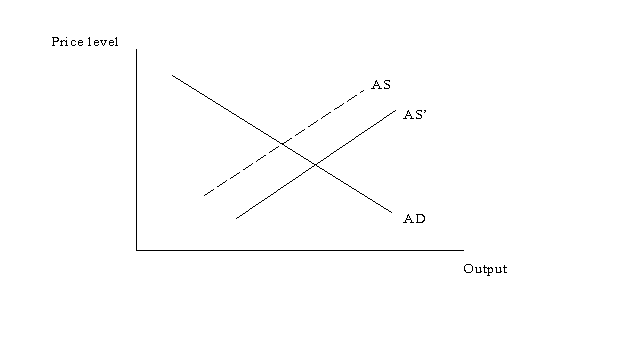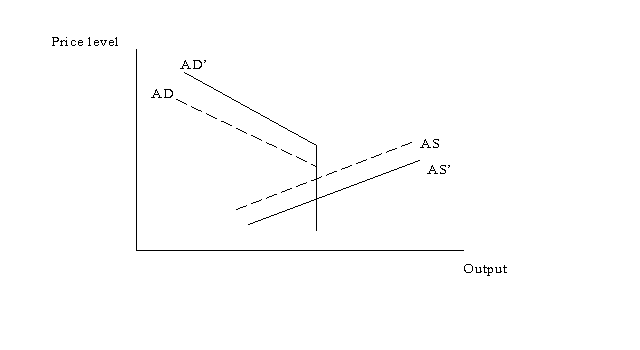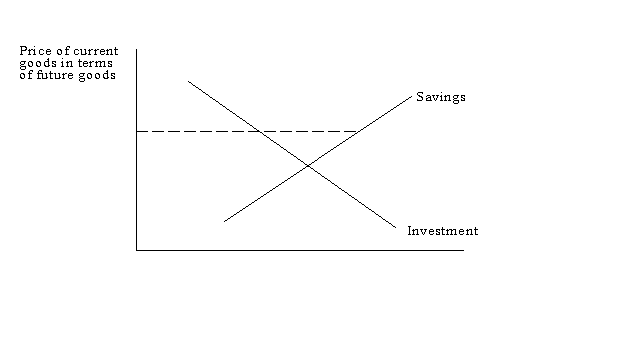
Figure 2

Figure 3
This week's cover story in The Economist makes it more or less official. Deflation, not inflation, is now the greatest concern for the world economy. Over the past year, producer prices have fallen throughout the advanced world; consumer prices have been falling for the last 6 months in France and Germany; in Japan wages have actually fallen 4 percent over the past year. Until the recent crisis prices were falling in Brazil; they continue to fall in China and Hong Kong; they will probably soon be falling in a number of other developing countries.
So far, none of these price declines looks anything like the massive deflation that accompanied the Great Depression. But the appearance of deflation as a widespread problem is disturbing, not only because of its immediate economic implications, but because until recently most economists - myself included - regarded sustained deflation as a fundamentally implausible prospect, something that should not be a concern.
The point is that deflation should - or so we thought - be easy to prevent: just print more money. And printing money is normally a pleasant experience for governments. In fact, the idea that governments have a hard time keeping their hands off the printing press has long been a staple of political economy; dozens of theoretical papers have argued that the temptation to engage in excessive money creation causes an inherent inflationary bias in fiat-money economies. It is largely to combat that presumed bias that most of the world has accepted the notion that monetary policy should be conducted by an independent central bank, insulated from political influence - and has written into the charters of those central banks that they should seek price stability as their main, often only, goal.
Yet here we are, with deflation turning out to be a serious problem after all - and with policymakers finding that it is not as easy either to prevent or to reverse as we all thought.
How can this be happening? What does it imply for policy? The purpose of this note is to argue that more or less conventional economic theory actually does suggest some answers to these questions - but that these answers fly in the face of conventional policy wisdom. And because the answers are so hard to accept, deflation is indeed a real risk. (This note should be viewed as a companion piece to my earlier writings on Japan, particularly Japan: still trapped , but this time tries to approach the problem more generically).
The note is in four parts. The first considers the popular view that deflation is simply a product of world excess capacity, and the problems with that view. The second part argues a point that is gradually becoming familiar: that concerns about deflation generally make sense only if they are linked with the idea of a liquidity trap, in which the money supply is irrelevant at the margin. The third part tries to go to a deeper level, relating deflationary pressures to an excess of desired saving over desired investment - an approach that leads to a seemingly paradoxical interpretation of deflationary pressures that I believe to be fundamental to the whole issue. Finally, I consider the policy implications of the apparent emergence of a serious deflationary threat.
1. Excess capacity?
In the business press one often finds a simple view about deflationary pressures that runs something like this: the world's production capacity is now growing more rapidly than ever before, thanks to globalization, high rates of investment, and rapid productivity increase. Meanwhile, demand is not keeping up - perhaps because income is too unequally distributed, perhaps because consumers (outside the United States) are satiated. The result is global excess capacity, which exerts an inexorable downward pressure on prices.
To see why most economists have had a hard time taking this view seriously, consider the simple aggregate-supply aggregate-demand diagram ( Figure 1 ) that appears in virtually every principles text. What advocates of the simple excess capacity story seem to be saying is that the AS curve has shifted right, as illustrated in the figure. And this would indeed, other things equal, lead to a decline in the price level. But why should other things be equal? In particular, why couldn't the central bank simply increase the money supply, and in so doing shift the AD curve far enough to the right to prevent the deflation? And why wouldn't it do so? After all, the results of that expansion would be beneficial from all points of view: more output, more jobs, and more stable prices.
True, a country committed to a fixed exchange rate cannot freely print money even if it is faced with deflation; that is why deflation in Hong Kong or Brazil are not particularly troubling from a theoretical (as opposed to practical) point of view. But large economies with freely floating exchange rates - like Japan, or euroland, or the United States - are free to expand the money supply as much as they like. So they should find deflation easy to prevent.
But it has become clear from Japan's experience that it isn't that easy
after all. Why?
2. The liquidity trap
According to the textbooks, the aggregate demand curve derives its slope from the impact of the price level on the real money supply. The standard linkage runs like this: A lower price level leads to a higher level of M/P, which leads to a lower interest rate, which leads to higher investment and hence to greater aggregate spending. Since the linkage runs through M/P, then, the curve can always be shifted up simply by increasing M. (To forestall any confusion, think of M as the monetary base rather than some broader aggregate). And since it is easy to increase M, it is easy to shift AD up.
But suppose that some link in the chain is broken - suppose, in particular, that beyond some point an increase in M/P doesn't lead to higher spending. The most likely reason this would happen is that the interest rate is already near zero, and hence cannot be driven any lower. Then it is still true that an increase in M shifts the AD curve up - but it may not shift it to the right.
Figure 2 illustrates the point. It shows an AD curve that has a normal slope over some range, but that below some critical level of prices - which is to say, above some critical level of M/P - becomes vertical, because further increases in the real money supply have no further effect on real spending. An increase in the money supply, as illustrated by the shift from AD to AD', will shift the whole schedule up; but in the liquidity-trap range will not shift it to the right. And if the AS curve turns out to put the economy in a liquidity trap, monetary policy will no longer be effective in fighting deflation.
So to make sense of an argument that suggests that the world economy as a whole, or any of its larger components, faces inexorable deflationary pressures we must also suppose that the economy is in or is about to be in a liquidity trap.
And of course Japan is in such a trap, and those worried about both Europe and the United States fear that they too may fall into liquidity traps. But let us now take a deeper look at how such traps themselves are possible.
3. Saving, investment, and the paradox of deflation
While Milton Friedman's dictum that "inflation is always and everywhere a monetary phenomenon" may be the most famous tag line in monetary economics, I have always preferred a dictum I first heard from Rudi Dornbusch: "It takes two nominals to make a real". A change in a nominal variable, like the money supply, can affect the real economy only if some other nominal variable, like wages, is "sticky" enough to give it some traction.
The converse is also true: a change in the real economy always mandates changes in the ratio of two nominal variables; one must invoke some nominal mechanism to determine how the numerator and the denominator change. Thus a growth in aggregate supply normally increases real balances, M/P; but only if M does not grow sufficiently is the result a fall in P.
So what is the sticky nominal variable that explains how changes in the real economy are translating into downward pressure on prices? In the case of countries with fixed exchange rates, the obvious answer is the nominal exchange rate. In Hong Kong what is happening is, in effect, that changes in the economy's external environment mandate a depreciated real exchange rate - or to anthropomorphize a bit, the economy "wants" a depreciated real exchange rate. Since the nominal rate is fixed, however, this can only be accomplished via a decline in the city's price level.
But how do we make sense of seemingly inexorable deflationary pressures in economies without fixed exchange rates, like Japan? Think of it this way: the real side of any economy determines a number of equilibrium relative (not nominal) prices. Among these prices is the price of current goods in terms of future goods (which is a funny way of saying the real interest rate, but bear with me). We may loosely think of this relative price as being determined by the supply of savings and the demand for investment, as in Figure 3, both drawn under the assumption of full employment.
Let us now look at the components of this relative price. Let P be the current nominal price level, i the one-period nominal interest rate, and Pe the expected future price level. Then the price of current goods in terms of future goods - that is, the quantity of future goods one must give up to consume one more unit in the present - is P(1+i)/Pe, or, writing it a bit more conventionally, (1+i)(P/Pe).
Almost everyone agrees that what is happening in Japan right now is that the saving Japanese residents would want to undertake at full employment exceeds the investment (including net foreign investment) that businesses find profitable. This means, more or less by definition, that the price of current goods in terms of future goods is above its equilibrium level, as suggested by the dotted line in Figure 3. And this is true despite the fact that the nominal interest rate is virtually zero. Clearly, the economy "wants" a lower value of P/Pe, in the same sense that Hong Kong's economy "wants" a depreciated real exchange rate. And because Pe is sticky - because people have some notion about what prices will be in the future - this adjustment is coming via a fall in P.
But a lower value of P/Pe - a lower current price level as compared with the expected future level - is the same as a higher expected future price level as compared with the present, aka expected inflation. Thus we are led inexorably to a seemingly paradoxical conclusion:
Japanese-type deflation is an economy's way of "trying" to get the expected inflation it needs.
This conclusion sounds very peculiar, but on reflection it is the same as the logic we commonly use in thinking about asset prices. Suppose that a country reduces its interest rate: this makes its bonds unattractive to investors unless they expect the currency to rise; what must happen then, as Dornbusch taught us, is that the currency must overshoot, depreciating below its long-run value in order to be expected to rise. The logic of deflation in a liquidity trap is the same: it is because spending in the current period is unattractive unless prices are expected to rise that the current price level is pushed down.
The difference, of course, is that unlike the price of an asset, the
aggregate price level of an economy does not fall quickly and easily. In
"trying" to generate the necessary expectations of inflation, the economy
instead subjects itself to a slow, grinding process of deflation. And the
great fear is that this gradual deflation may in turn get built into expectations
(reducing the value of Pe) and create a self-reinforcing downward
spiral.
4. Policy implications
The concern expressed by The Economist is, simply, that in the near future a large part of the world will start to look like Japan: that it will face deflationary pressures that cannot be offset simply by increasing the money supply. What can be done?
One answer is to pursue structural reforms that eliminate the savings-investment gap. Optimists believe that recapitalizing banks will do the trick for Japan. But this is a leap of faith based on very little supporting logic or evidence.
A second answer is to close the savings-investment gap with government dissaving. The trouble with this solution, of course, is that it poses problems for the long-term solvency of the government; Japan has already pretty much reached the limits of this approach.
All of which leads us to the need for unconventional policy approaches, and in particular for radical monetary policies of some kind.
As a temporary measure, monetary policy could be effective even in a liquidity trap if the central bank were to undertake open-market operations in assets other than short-term government debt. By increasing the demand for, say, long-term Japanese government bonds the Bank of Japan could surely have a positive impact on the economy even now. But while such measures would probably have a substantial short-run impact, they would only be effective in the longer term if the central bank were actually to acquire a substantial share of the relevant assets outstanding - which would raise some uncomfortable questions about the nature of the central bank's role.
The obvious answer to sustained deflationary pressures, then, is the now-notorious proposal for "managed inflation": since deflation is the result of an economy "trying" to get the expected inflation it needs, to avoid deflation one must provide that expected inflation by credibly promising that future price levels will be sufficiently high compared with the present.
And this is where I get nervous. This nervousness is not because the idea of fighting deflation by promising inflation is crazy: it is in fact a straightforward conclusion from quite standard models. Indeed, once one admits that deflationary pressures come from the persistence of a savings-investment gap even at a zero interest rate, it is hard to see how this conclusion can be avoided. But the idea sounds crazy, and that is a problem. How can we get finance ministers and central bankers, who have spent their whole careers preaching the evils of inflation and the virtues of price stability, to accept the idea that price stability may not be an available option?
For if deflationary forces are as powerful as they are in Japan - and may soon be in the rest of the world, if The Economist is right - there is no middle ground. Either policy gives the economy the inflation expectations it needs, or the economy will try to get that inflation via grinding deflation - a proposition that sounds paradoxical but is actually a matter of simple economic logic. Attempts to find a halfway house - to aim merely for stable prices rather than sufficiently high inflation - will be doomed to failure.
In short, if you really believe that deflation is now a global threat, you should also believe that only policies that lie outside the realm of what is conventionally regarded as responsible will contain that threat. And because unconventional thinking is not what one expects (or, in normal times, wants) from finance ministers and central bankers, there is now a real risk that deflation will indeed become a global scourge.
